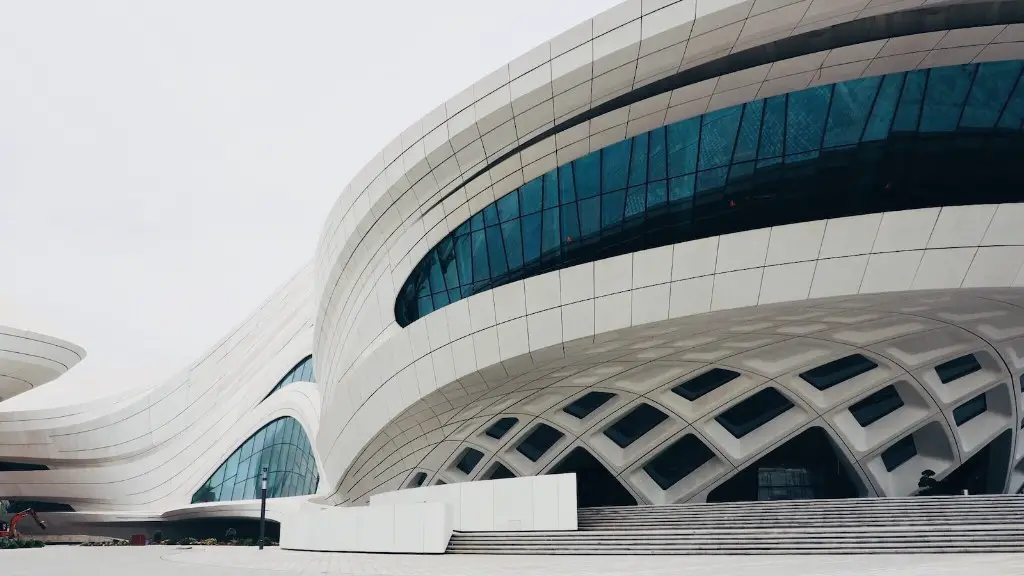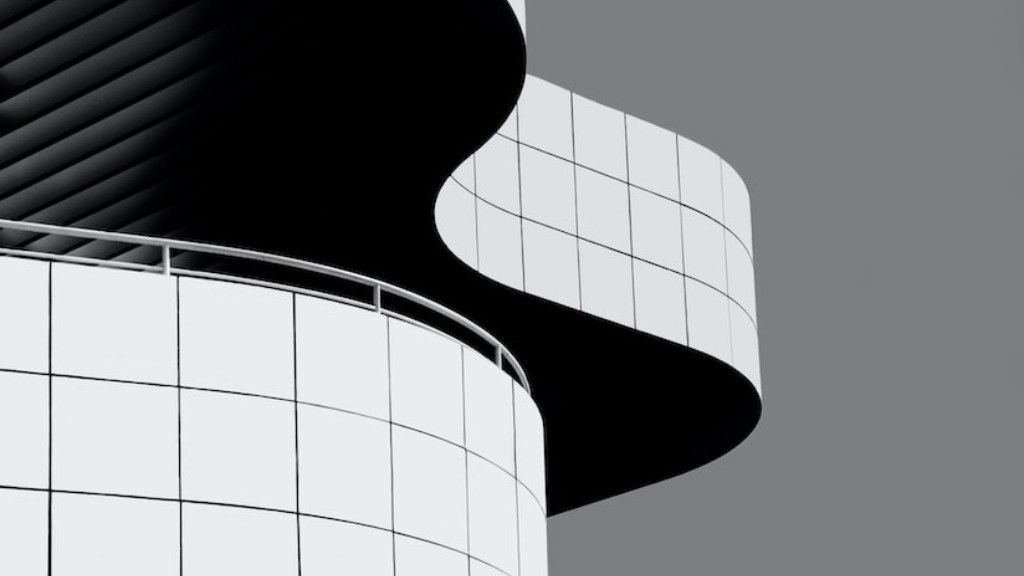The Roman period was one of great architectural achievement. The Romans improved upon Greek architecture in a number of ways, most notably in the area of structural engineering. They also developed new building materials and methods, which allowed them to construct a wide variety of structures, from monumental public buildings to modest private homes. The Romans also created a style of architecture that was highly influential in subsequent centuries.
The Romans took the groundwork laid by the Greeks and expanded upon it, making their own distinct brand of architecture. They were particularly known for their use of arches and vaults, which allowed for much more impressive and grandiose structures.
How did the Romans change Greek architecture?
The ancient Greeks were well-known for their impressive architecture, which incorporated various styles like Doric, Ionic, and Corinthian. The Romans, however, used new materials and technology such as concrete to develop their own unique style of architecture. This new style included features like the arch and dome, which were not seen in Greek architecture.
The arch and the vault are two architectural features that the Romans did not invent but did master. Arches can carry much more weight than straight beams, allowing longer distances to be spanned without supporting columns. Vaults can also span large distances and are very strong, making them ideal for supporting heavy loads.
How did the Romans improve architecture
Roman architecture developed the use of arches and vaults which allowed them to create large roofed structures without a reliance on pillars. This was a significant development as it meant that buildings could be much larger and more impressive. Arches and vaults also allowed for a greater variety in the design of buildings.
There is a major difference between Greek and Roman temples. Greek temples were built freestanding and without regard for the other buildings around them. Roman temples, on the other hand, were built in conjunction with large municipal building projects and their final design took this into account.
How did the Romans adapt Greek art?
The realistic proportions, sense of movement, and overall beauty of Greek sculptures was inherited by the Roman artists, who often copied Greek sculptures before creating their own. The Romans, like the Greeks, carved both free-standing statues and reliefs that were commonly used to decorate temples. Roman statues, however, were often more realistic and less idealized than their Greek counterparts. Roman artists also developed a new type of sculpture, called a portrait bust, which was a realistic portrait of a person in the round.
There are some very distinct differences between Greek and Roman theaters. Greek theaters were carved out of a hillside, while Roman theaters were built up from solid ground using either cement or stone. The orchestra is also larger in Roman theaters because the structures were used for other events which required more space.
What is the Romans greatest contribution in architecture?
The Romans were the first builders in the history of architecture to realize the potential of domes for the creation of large and well-defined interior spaces. Domes were introduced in a number of Roman building types such as temples, thermae, palaces, mausolea and later also churches.
The five orders of classical architecture were first codified by the Roman architect Vitruvius in his treatise De Architectura. The orders were subsequently adopted by the architects of ancient Greece and Rome, and then slowly spread to the rest of Europe over the following centuries. The five orders are Doric, Tuscan, Ionic, Corinthian, and Composite.
The Doric order is the oldest and simplest of the orders, with columns that are relatively short and thick, and a simple entablature without any elaborate sculptural decoration. The Tuscan order is a variant of the Doric that originated in Italy, with slightly taller columns and a more slender proportions. The Ionic order originated in Asia Minor, and is identified by its characteristic volute capitals on the columns. The Corinthian order is the most ornate of the orders, with grotesquely carved capitals and an abundance of sculptural decoration on the columns, frieze, and entablature. The Composite order is a mix of the Ionic and Corinthian orders, with columns that have both Ionic and Corinthian elements.
What architecture did the Romans take from Greek
The Roman use of columns was strongly influenced by the Greeks. They used the Greek orders and added two new ones, Tuscan and Composite. However, the Corinthian order was by far the most popular. Roman architects used columns not only as functional bearing elements but also as applied (engaged) decoration. Though rigidly adhering to symmetry, the Romans used a variety of spatial forms.
The Roman empire was one of the largest empires in history and their architecture is still evident in many popular tourist destinations today. The Arc de Triomphe du Carrousel and Place Vendôme are both examples of Roman-inspired architecture in Paris. In Washington D.C., Union Station and the Robert Street Bridge were both built with Roman influences. The Jefferson Memorial and Federal Hall in New York City are also examples of Roman architecture that can still be seen today.
What improvements did the Romans make?
Ancient Rome was one of the most advanced civilizations of its time, with many innovations that are still used today. Here are 10 of the most impressive:
1. Aqueducts: The complex system of aqueducts that supplied Rome with fresh water was one of the engineering feats of the ancient world.
2. Concrete: The use of concrete in construction was another Roman innovation that is still used today.
3. Newspapers: The first newspapers were invented in Rome, and were used to disseminate news and information to the public.
4. Welfare: Rome was the first civilization to establish a welfare system, which provided assistance to the needy.
5. Bound Books: The codex, a bound book with pages made of parchment or papyrus, was invented in Rome and is still used today.
6. Roads and Highways: The network of roads and highways built by the Romans was one of the biggest achievements of the ancient world.
7. Roman Arches: The use of arches in construction was first developed by the Romans, and is still used today in many buildings and bridges.
8. Surgical Instruments: The Romans were the first to develop many surgical instruments, including
Some of the most important architectural innovations developed by the Romans were the basilica, baths, amphitheaters, and triumphal arches. Unlike their Greek counterparts, Roman theaters were freestanding structures. This allowed for a greater degree of flexibility in their design and layout. The Romans also made use of concrete and vaulting, which allowed them to create much more complex and durable structures than their predecessors.
Is Greek and Roman architecture the same
Ancient Roman architecture borrows the classical Greek architectural style, but is distinct from Greek buildings. It is a new architectural style that was developed for the ancient Romans. These buildings are frequently regarded as part of the classical architecture.
There are several key differences between Ancient Greek and Roman artists. For one, Ancient Greek artists tended to focus more on individualism and idealism, while Ancient Roman artists were more concerned with realism and the spirit of their rulers. Additionally, Ancient Greek artists were influenced by the philosophy of Aristotle, while Roman artists were more influenced by the Stoic philosophy. This difference is reflected in the art of each civilization – while Greek art is often seen as more emotionally expressive and aesthetic, Roman art is more concerned with function and practicality.
Did Romans or Greeks invent arches?
The Romans were very good at using arches in their construction projects. They used them to build bridges, aqueducts, and other structures. This made their buildings very strong and durable.
The Romans were great admirers of Greek art and culture, and they did much to preserve and transmit these traditions to later ages. Roman sculptures and paintings are characterized by their simplicity and rationality, their humanity, and their sheer beauty. These qualities have made classical art one of the most influential and enduring traditions in the Western world.
Warp Up
The Romans improved upon Greek architecture in several ways. They improved the materials and construction methods used in buildings, which made them more durable and resistant to weathering. They also developed new architectural styles, such as the Tuscan and Composite orders, which were more ornate and aesthetically pleasing than the plainer styles of Greek architecture. Additionally, the Romans incorporated features such as arches and vaults into their buildings, which increased their structural stability and allowed for larger, more open spaces.
The Romans were able to improve upon Greek architecture in a few ways. One way was by using concrete, which the Greeks did not have. This allowed the Romans to build bigger and better structures. Another way was by using arches and vaults, which helped to make their buildings stronger. Finally, the Romans also used decorative elements such as columns and mosaics to make their buildings more visually appealing.





